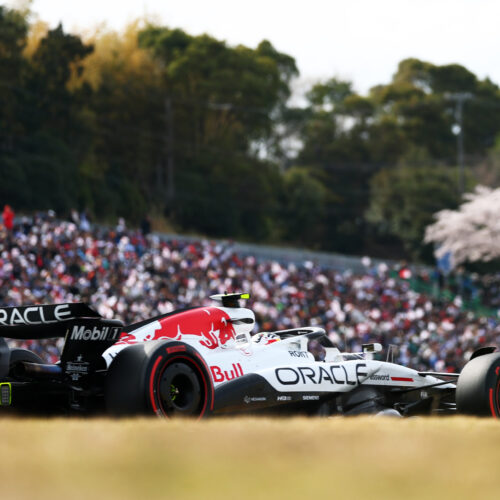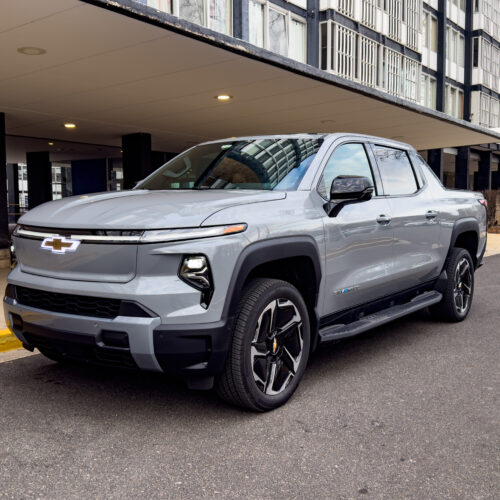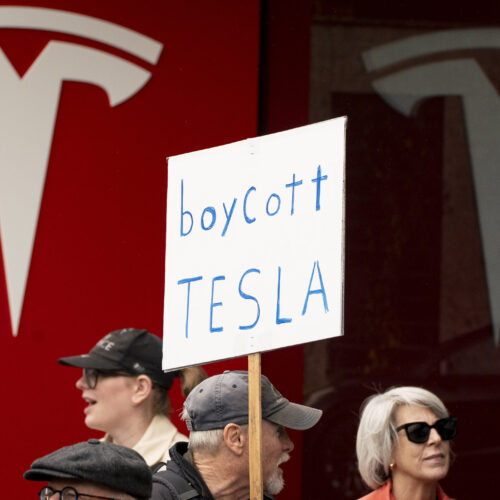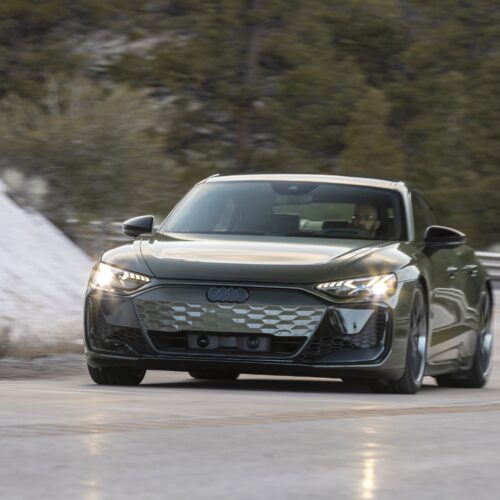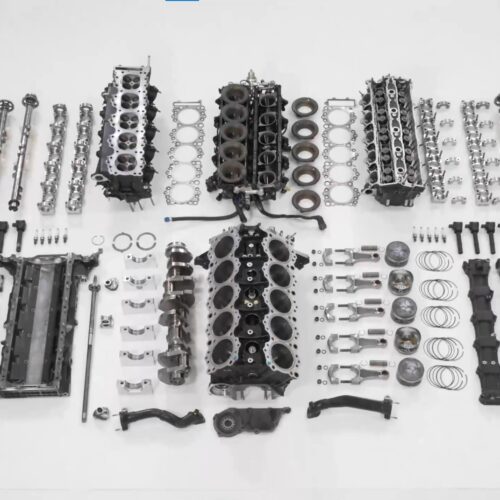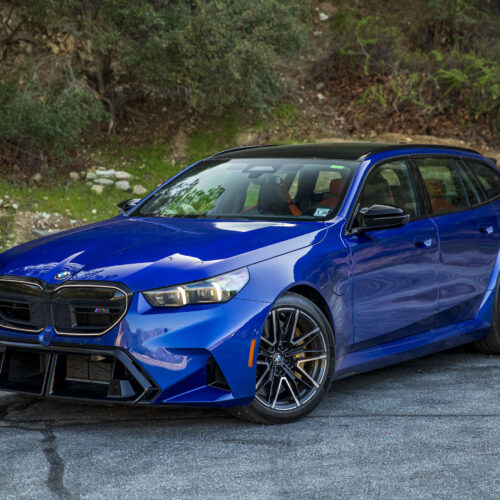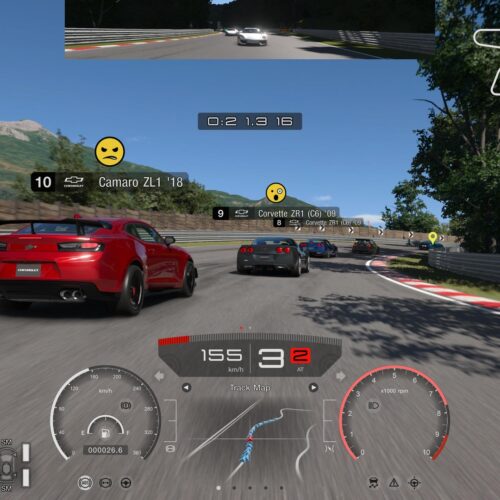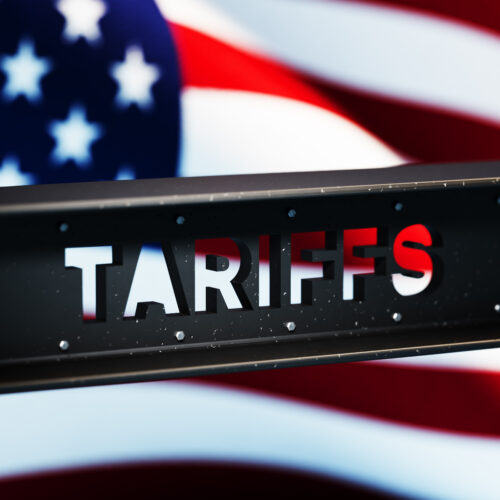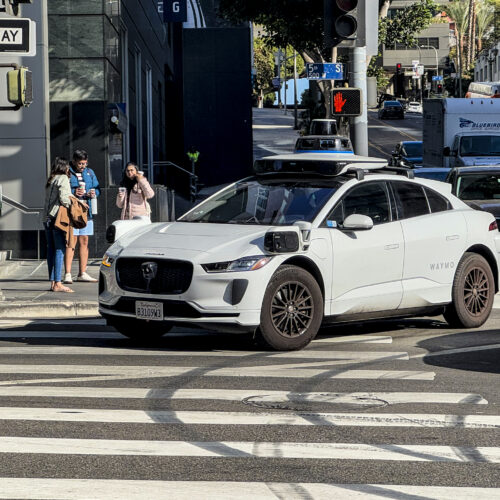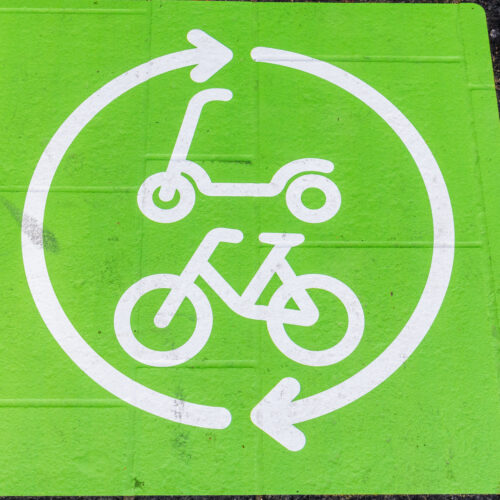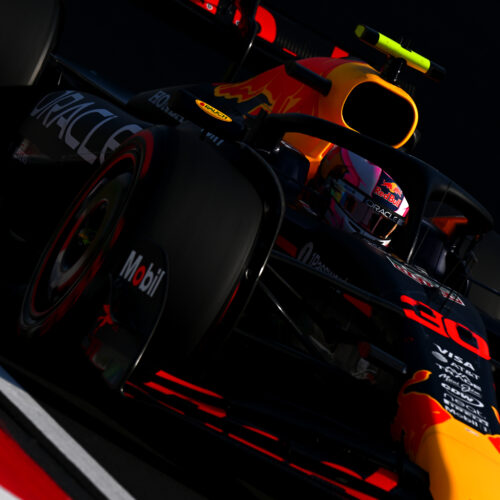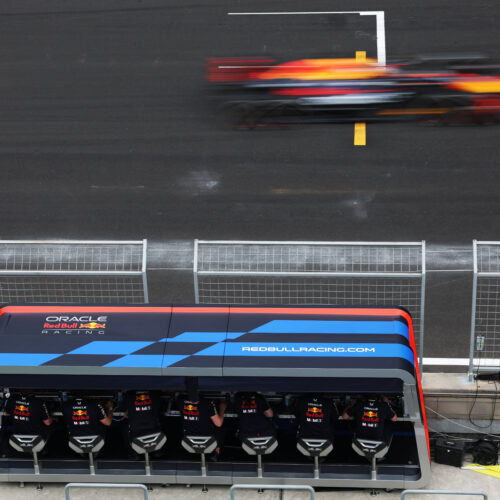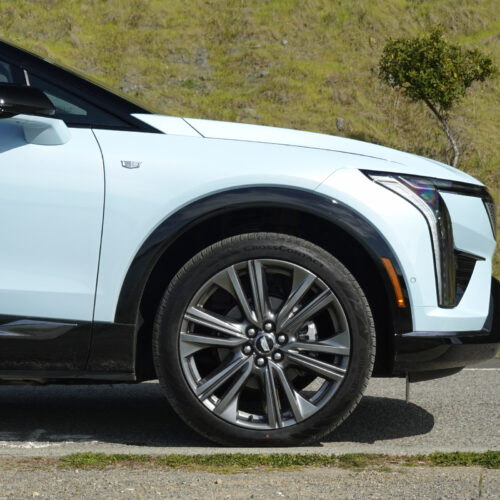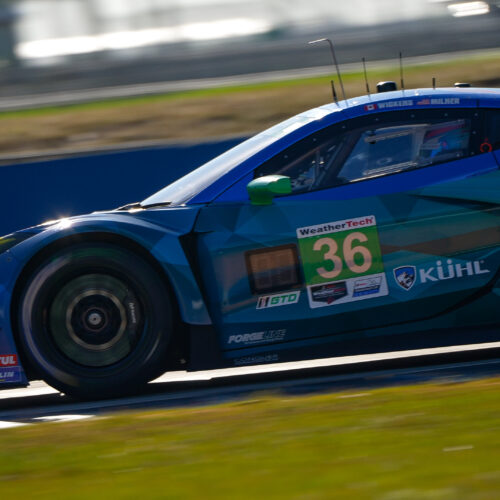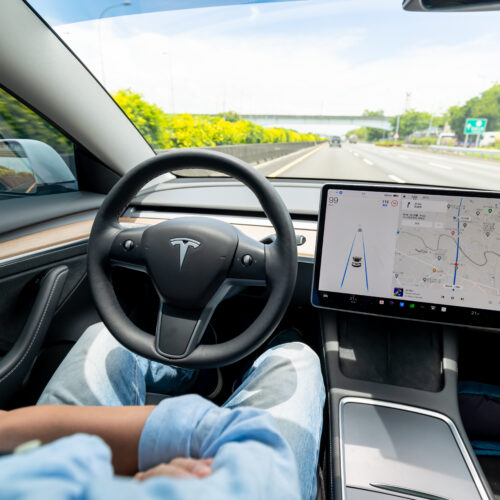- 97% of drivers want in-car payment system for tolls, parking, charging
Any system should be easy to use and work for parking, fueling, and charging.
Imagine having a well-designed payment app for your car's infotainment system that let you effortlessly pay for parking, road tolls, EV charging, or refueling. Such a concept found universal appeal among US drivers, according to a study by a market research company. But simplicity is key: The moment it gets difficult to register or use such an app, interest wanes and people prefer to pay for things the older-fashioned ways, DriveResearch found.
For instance, there was a high level of desire to be guided through the process of entering one's billing or credit card info into an in-car payment app. Seven in 10 participants said that they'd want such a thing to happen when the car is being delivered and while they're still in the "new car" mindset.
But most don't want to do that at a dealership: 77 percent also said they would prefer to register for in-car payments at home, via the phone or a computer, with only 67 percent wanting to use the car's infotainment screen and just over half (53 percent) saying it would be OK to use the automaker's connected car app.
- F1 in Japan reminds us a great track might not make for a great race
Here's why the 2025 Japanese Grand Prix was so boring.
Formula 1 held the third round of its 2025 season at Suzuka in Japan yesterday. The race used to be held toward the end of the calendar, but F1 now visits while the cherry blossoms are blooming, which certainly makes for some good visuals. With a hefty timezone difference between Suzuka and fans in Europe and the US, a difficult decision must be made: Do I stay up all night to watch it live? Let's just say I was glad I did that for qualifying on Friday night—and I was equally glad I slept in the following night and watched the race on Sunday morning.
The circuit at Suzuka is one of the few old-school tracks left on the calendar. Along with places like Monaco, Catalyunya, and Spa-Francorchamps, it's a real driver's track; anyone who's played it in Forza, Gran Turismo, or the racing franchise of your choice will know what I mean. The first corner is flat after a long straight. The left-right-left-right of turns 3–7 might be the best set of esses on any track in the world. It even crosses over itself in a figure-eight.
Like Spa, though, some bits have become less of a challenge for modern F1 cars with their immense amounts of power and grip. 130R used to be a test of nerve, but now the cars barely notice it as a corner.
- 2025 Chevrolet Silverado EV LT review: This is one long pickup truck
Has the moment passed for massive electric trucks with massive range?
Will this Chevrolet Silverado EV be the biggest electric vehicle we test this year? Almost certainly. Fractionally narrower and less tall than a Hummer EV pickup at more than 18 feet (just under 6 m) long and with a curb weight of 8,532 lbs (3,870 kg), the Silverado EV is what happens when Chevy's electric vehicle engineers get tasked with making their rivals over at Ford feel like they didn't try hard enough with the electric F-150.
Now that production has been ongoing for a while, Chevy is filling out the lower trim levels. For commercial customers, there's a Work Truck, but for normies, the entry point is now the LT trim, at a tax credit-friendly—if still wallet-munching—$75,195 (for as long as the tax credit still lasts and until the effect of pointless and damaging trade tariffs make themselves known, of course).
The 645 hp (481 kW), 756 lb-ft (1,037 Nm) Silverado EV LT comes with the smaller of the two battery packs offered to non-commercial customers. That adjective is doing a lot of work there; a useable 170 kWh is indeed smaller than the 200 kWh you can find in the more expensive RST Max Range, but it's also more than double the capacity of something like a Hyundai Ioniq 5. The range estimate is a commensurate 408 miles (657 km), or "just" 390 miles (628 km) if, as in our test pickup, the premium package has been fitted.
- Employee pricing for all, tariffs on the sticker: OEMs react to tariffs
New car prices were already 25% more expensive than before the pandemic. Now what?
New 25 percent tariffs on all foreign car imports into the United States went into effect this week as President Trump ignited his new trade war. It has caused something of a rush at dealerships around the country as customers descend on existing stock in an attempt to beat looming price increases of thousands of dollars. Now we're starting to see how the automakers are reacting.
Employee pricing for all
Ford is in the rather enviable position of having the least exposure to the new vehicle tariff than all but Tesla; less than 20 percent of the cars, trucks, and SUVs that Ford sells in the US are imported from abroad. And it will lean into that with a new ad campaign with the slogan "From America, For America," which launches today. (Note that this does not take into account the separate parts tariff that goes into effect before May 2.)
Never mind the slogan, though. The campaign extends Ford's "A plan" pricing, which in plain English is its employee discount, to all its customers. The blue oval is offering A plan pricing on most 2024 and 2025 vehicles, including the all-electric F-150 Lightning and the Mustang Mach-E, as well as its various hybrids.
- Tesla sales and production slumped heavily in Q1 2025
The numbers are going the wrong way for a company valued on continuing growth.
Tesla posted its production and sales numbers for the first quarter of 2025 this morning, and they continue the bad news streak for the electric automaker. Tesla produced 362,615 vehicles in total between January and the end of March, a 16.3 percent decrease from the same period in 2024.
The drop in sales was a little less bad; unlike this time last year, Tesla was able to more closely match production with demand. As a result, the company delivered 336,681 EVs in Q1, a drop of 12.9 percent compared to Q1 2024.
The Models 3 and Y make up the vast majority of Tesla's business—it built 345,454 of them in Q1 2025, a 16.2 percent reduction compared to the same period last year. Despite a recent refresh for the Model Y, which comprised the majority of these two EVs, sales declined by 12.4 percent year over year, with just 323,800 being sold, compared to 369,783 deliveries for Q1 2024.
- 2025 Audi RS e-tron GT: More range, more power, still drives like an Audi
The refresh looks the same but charges faster, goes faster, and much farther.
LAS VEGAS—Audi's sleek four-door electric sedan, the e-tron GT, has just received its midlife refresh. Usually, a midlife refresh is mostly cosmetic, intended to prevent the model from feeling too stale in the marketplace. But this time Audi has kept the visual changes to a minimum. There are new wheels and a new interior, as well as redesigned front and rear fascias, although the changes are quite subtle. Instead, there's been a comprehensive reengineering effort under the skin.
Perhaps not quite as comprehensive as the Polestar 2 refresh—which swapped front-wheel drive for rear—but there are now new motors and a new battery pack, which bring with them increased range, a reduced 0–60 mph time, and even faster fast-charging. Audi says it has also worked on the driving dynamics, including adding the same active suspension system we recently experienced in the Porsche Panamera.
As before, the e-tron GT comes in two specifications, but now the base model is the $125,500 S e-tron GT. This now offers 670 hp (500 kW), a 148 hp (110 kW) improvement on last year's model. That drops the 0–60 mph time from 4 seconds down to 3.3, but the 51-mile ( 82 km) increase to its range—now 300 miles (482 km) on a single charge—is probably going to be the most enticing improvement for potential buyers. That's courtesy of a new 105 kWh (gross, 97 kWh usable) battery.
- Honda will sell off historic racing parts, including bits of Senna’s V10
Honda will also find new homes for some heritage IndyCars and MotoGP bikes.
Honda's motorsport division must be doing some spring cleaning. Today, the Honda Racing Corporation announced that it's getting into the memorabilia business, offering up parts and even whole vehicles for fans and collectors. And to kick things off, it's going to auction some components from the RA100E V10 engines that powered the McLaren Honda MP4/5Bs of Ayrton Senna and Gerhard Berger to both F1 titles in 1990.
"We aim to make this a valuable business that allows fans who love F1, MotoGP and various other races to share in the history of Honda's challenges in racing since the 1950s," said Koi Watanabe, president of HRC, "including our fans to own a part of Honda's racing history is not intended to be a one-time endeavor, but rather a continuous business that we will nurture and grow."
The bits from Senna's and Berger's V10s will go up for auction at Monterey Car Week later this year, and the lots will include some of the parts seen in the photo above: cam covers, camshafts, pistons, and conrods, with a certificate of authenticity and a display case. And HRC is going through its collections to see what else it might part with, including "heritage machines and parts" from IndyCar, and "significant racing motorcycles."
- The 2025 BMW M5 Touring review: Way more power, way too much weight
BMW has been making M5s for 40 years, but the latest one has lost its way somewhat.
When BMW introduced the original M5 to the European motoring public in 1984, the automaker effectively established a new vehicle segment. By combining the practical and understatedly rakish E28 5-Series with the motorsport-derived six-cylinder engine from the M1 supercar, the automaker had created a “do-it-all” performance machine, a vehicle that could serve as a tasteful and luxurious sedan one moment and a charismatic sports car the next.
It’s a concept that has guided the development of not only subsequent generations of the M5 but also all of the other sports sedans that have dared to go toe to toe with it over the past forty years. For decades, it’s been the benchmark by which all big, fast four-doors have been judged, but after spending a week with the all-new $125,275 G99-generation M5 Touring, I can’t help but wonder if that era is coming to a close.
A range of factors have contributed to this seismic shift. While other automakers have been chasing the M5’s ghost around the Nürburgring, BMW has purposely started to reposition its M Division vehicles as the pinnacle representation of the brand rather than the pinnacle representation of BMW performance. It’s a move that has yielded models like the XM, a vehicle that certainly has plenty of firepower under the hood but ultimately prioritizes style over substance.
- Trump on car tariffs: “I couldn’t care less if they raise prices”
Consumers will have to pay the price of the president's unnecessary trade war.
Late last week, President Donald Trump decided to upend the automotive industry by levying a new 25 percent import tariff on all imported cars, which goes into effect on April 2. An additional 25 percent tariff on car parts is set to go into effect within the next month, which promises to make US-made cars more expensive as well, as many parts and subassemblies used in domestic manufacturing come from suppliers in Canada or Mexico.
During the election campaign (and in the years preceding it), Trump repeatedly claimed that the cost of tariffs would be borne by the exporters. But tariffs don't work that way—they're paid by the importer, at the time of import.
The White House does not appear to have any concerns about this, despite a report in The Wall Street Journal last week claiming that Trump had warned automakers not to pass the costs on to their customers.
- Gran Turismo 7 expands its use of AI/ML-trained NPCs with good effect
First, Sony AI made an unbeatable AI driver; now, it's retrained it to be a good NPC.
In 2022, a team of researchers at Sony AI sat down and made an AI agent that was nearly unbeatable at the racing game Gran Turismo 7. More than just car control, the agent, called GT Sophy, also had to learn racing tactics and strategies—and even etiquette. Up against the world's best human players, Sophy beat the humans by 104 races to 52 in a match in 2021.
Since then, Sony AI and Polyphony Digital have been hard at work retraining it from being able to dominate the world's best with ease into something that's more fun for the rest of us to compete against. The latest refinement is GT Sophy 2.1, which appeared as part of GT7's latest update yesterday. It's now enabled at more tracks, and you can finally set up custom races at those tracks using the better AI.
“Since we first introduced GT Sophy three years ago, we have worked closely with [Polyphony Digital] to explore how AI can enhance gameplay and create more dynamic and fun racing experiences for players of all skill levels," said Kaushik Subramanian, senior staff research scientist at Sony AI. "With GT Sophy 2.1, we are giving players more control than ever over their interactions with GT Sophy by allowing them to fine-tune gameplay, experiment with new strategies, and advance their racing skills."
- Auto industry braces for chaos as Trump sets 25% tariff on all imports
Expect new cars to cost thousands of dollars more as a result of the new tariffs.
Yesterday afternoon, once the markets were closed and could no longer react immediately, US President Donald Trump announced that starting on April 2, all imported automobiles and many imported car parts will now be subject to an extra 25 percent tariff. Despite Trump's rhetoric during his election campaign and since taking office, tariffs are paid for by those importing the goods, not the exporters, so we can look forward to most new cars and trucks—and their maintenance costs—getting a lot more expensive.
During his first term in office, Trump started trade wars with key US trading partners like Canada, the European Union, and China. Upon his return in 2025, more trade wars have been the name of the game. A 25 percent tariff on all imports from Canada and Mexico was threatened and then implemented at the beginning of March, before being partially reversed just two days later. Additionally, a 10 percent tariff on Chinese exports was also levied.
Less than two weeks later, a new 25 percent tariff on all steel and aluminum imports also joined the club.
- After 50 million miles, Waymos crash a lot less than human drivers
Waymo has been in dozens of crashes. Most were not Waymo's fault.
The first ever fatal crash involving a fully driverless vehicle occurred in San Francisco on January 19. The driverless vehicle belonged to Waymo, but the crash was not Waymo’s fault.
Here’s what happened: A Waymo with no driver or passengers stopped for a red light. Another car stopped behind the Waymo. Then, according to Waymo, a human-driven SUV rear-ended the other vehicles at high speed, causing a six-car pileup that killed one person and injured five others. Someone’s dog also died in the crash.
Another major Waymo crash occurred in October in San Francisco. Once again, a driverless Waymo was stopped for a red light. According to Waymo, a vehicle traveling in the opposite direction crossed the double yellow line and crashed into an SUV that was stopped to the Waymo’s left. The force of the impact shoved the SUV into the Waymo. One person was seriously injured.
- Also, a Rivian EV spinoff, wants us to “move beyond cars”
Think e-bikes and scooters, not cars or SUVs.
There's a new "exciting, small EV" on the way, to be launched early next year by Also, a spinoff of the electric vehicle maker Rivian. Details are light on exactly what that product will be, but don't go expecting a $20,000 electric hatchback or the like—think more like an e-bike. Also will be into micromobility, not competing with Mini or Smart.
Also started out as an internal project to see if Rivian could use its knowledge of electric powertrains, vehicle electronics, and software to build other "small vehicle form factors." In fact, in 2023, news broke of a Rivian e-bike in the works at Rivian, although it was unclear if it would be something with pedals or more like an electric motorcycle.
Things are still rather vague. Also's announcement says its "flagship product" will launch in early 2026 and that the company will focus on the US and Europe at first. It will build "an exciting range of electric vehicles that are efficient, sustainable, and delightful to use," using in-house technology.
- F1’s cruel side is on show as Red Bull to fire Liam Lawson after 2 races
Red Bull will promote Yuki Tsunoda after Liam Lawson's two bad races.
Being Red Bull Racing 1 teammates with Formula 1 driver Max Verstappen is a hard ask. The Dutch driver took his fourth consecutive world championship last year, dominating the sport to such an extent that he led the points table across a 63-race, 1,029-day streak that only ended with McLaren and Lando Norris' victory in Australia earlier this month. Now we believe he's going to have his second teammate of the year, after just two races, as Red Bull gets ready to drop Liam Lawson for Yuki Tsunoda.
For three of its championship years, Red Bull built the fastest car in F1, and Verstappen's teammate Sergio Perez scored race wins and plenty of points to help the team secure the constructors championships in 2021, 2022, and 2023. But Red Bulls' designers have been evolving a concept that even its former design boss Adrian Newey thinks is flawed, and in 2024, we saw Perez' form evaporate after the first handful of races that year.
Verstappen was able to fight for the title thanks to his considerable skill in the car. But the team lost out to both McLaren and Ferrari in the constructors' standings, something that will have had a very considerable impact upon the end-of-year bonuses for Red Bull's hundreds of employees.
- How Polestar engineers EVs that can handle brutal winters
Heat pumps, throttle maps, and a whole lot of going sideways.
LULEA, Sweden—Staring out the window of a puddle jumper descending from Stockholm into Lulea, I spy frozen seawater for the first time in my life. Not nearly as much as I expected, though, for the middle of February at the northern end of Sweden. I've flown here to drift electric Polestars on an icy lake called Stor-Skabram, near the small outpost of Jokkmokk, fully above the Arctic Circle. Yet the balmy weather serves as a constant reminder of the climate change that inspires much of the narrative around the electric vehicle industry.
EVs on ice
An opportunity to get somebody else's cars sideways as much as possible on ice and snow is a particularly enjoyable way to spend a day, if you like driving cars. More importantly, automotive manufacturers rely on this kind of winter testing to fine-tune traction and stability-control programming, ensuring their cars can work well in the depths of the deepest winter. For EVs in particular, winter testing presents a more complex range of equations.
First of all, an EV can't ever turn the electronic nannies off entirely, because electric motors will rev to the moon with instantaneous torque the very instant their tires lose traction. So while software uses wheel speed sensors and regenerative braking, as well as accelerometers that detect yaw rates, each EV needs to then maintain progressive output responses to driver inputs that allow for confident performance and safety simultaneously.
- Did Red Bull build an undriveable car? Questions from the Chinese Grand Prix.
F1 reminds us it's entertainment, not just engineering and sport.
Formula 1 spent this past weekend in Shanghai for the 2025 Chinese Grand Prix. There was a little something for everyone: entertaining racing on-track, different winners for the sprint and Grand Prix, some driver and team intrigue, rumors of a potential technical shake-up happening soon, and a bit of an argument that exposes the entertainment side of the sport.
Once out in the countryside, skyscrapers are starting to fill in the backdrop behind the Shanghai International Circuit. One of the mid-2000s crop of race tracks designed by Hermann Tilke, it's characterized by the neverending decreasing radii that are turns 1 and 2, plus the longest straight on the calendar. It was freshly resurfaced for this year, eliminating the bumps and increasing the grip level to fix a botched job performed ahead of last year's F1 race.
China was home to the first sprint weekend of the year, with a 19-lap race on Saturday in place of that morning's practice session ahead of the 56-lap race on Sunday. Lewis Hamilton, now clad in bright Ferrari red, led from start to finish, showing the kind of ability that has led him to 105 race wins. Hamilton's last year with Mercedes was better than the winless 2022 and 2023, but his new Ferrari already appears to suit him better.
- The 2025 Cadillac Optiq: Sensibly sized and improves on the Equinox EV
The AWD Optiq is quite competitive in the sub-$60,000 EV crossover segment.
Badging on the rear of the new Cadillac Optiq may confuse some American buyers. This crossover is fully electric, so the alphanumeric nomenclature can't refer to engine displacement—and not horsepower, either. Instead, 500E4 refers to 500 Newton-meters of torque, the metric units for more familiar pound-feet, plus dual-motor all-wheel drive. Rating the Optiq's output in kilowatts might have at least rendered something at least somewhat more comprehensible, but the designation hints at the Optiq's intended global market, which in turn reveals just how important this crossover EV is for Cadillac's future.
The Optiq slots in as an upmarket variant of the Chevrolet Equinox EV, featuring a suite of enhancements unveiled at a Downtown Los Angeles preview last spring. With the exterior design, interior materials, and tech features all known quantities, I arrived to a drive program held in the San Francisco Bay Area—concurrently with the Escalade IQ—more curious to experience how much the Optiq's additional power and refinement can possibly improve on the already solid Equinox.
On paper, the Caddy bests its Chevy counterpart despite using much of the same hardware. In this case, an 85-kilowatt-hour battery allows for an EPA-estimated range of 302 miles (486 km) despite output from dual motors matching the AWD Equinox at 300 hp (223 kW), just with a bit more in the torque department at 354 lb-ft (almost, but not quite, that 500Nm figure).
- Boeing will build the US Air Force’s next air superiority fighter
The classified aircraft will replace the F-22 sometime in the 2030s.
Today, it emerged that Boeing has won its bid to supply the United States Air Force with its next jet fighter. As with the last fighter aircraft design procurement in recent times, the Department of Defense was faced with a choice between awarding Boeing or Lockheed the contract for the Next Generation Air Dominance program, which will replace the Lockheed F-22 Raptor sometime in the 2030s.
Very little is known about the NGAD, which the Air Force actually refers to as a "family of systems," as its goal of owning the skies requires more than just a fancy airplane. The program has been underway for a decade, and a prototype designed by the Air Force first flew in 2020, breaking records in the process (although what records and by how much was not disclosed).
Last summer, the Pentagon paused the program as it reevaluated whether the NGAD would still meet its needs and whether it could afford to pay for the plane, as well as a new bomber, a new early warning aircraft, a new trainer, and a new ICBM, all at the same time. But in late December, it concluded that, yes, a crewed replacement for the F-22 was in the national interest.
- Racer with paraplegia successfully test drives Corvette with hand controls
Bosch's new electronic braking system is enabling Wickens' return to the top level.
Robert Wickens was one of motorsport's rising stars when his life was permanently altered in a crash that paralyzed him from the chest down in 2018. Ever since, Wickens has said that his goal is to return to compete in the sport at the top level, and that looks set to happen early next month in Long Beach, California, following a successful test of his hand control-equipped Corvette GT3.R race car earlier this week.
The day-and-a-half test at Sebring in Florida wasn't Wickens' first time in a race car since his crash. In 2021 he tested a less-powerful front-wheel drive Hyundai Veloster N TCR car and competed in the Michelin Pilot Challenge series for Bryan Herta Autosport, winning the championship in 2023 with his teammate Harry Gottsacker in the newer Elantra N TCR car.
And last year, we bumped into him in Portland, Oregon, ahead of his test in the Formula E Gen3 Evo car.
- DOT must not give Tesla or other automakers a free pass, advocates say
Will Elon Musk's Tesla get special treatment?
Consumer advocates and the families of Tesla crash victims both called on Secretary of Transportation Sean Duffy this week not to weaken oversight of the automotive industry. As with other government agencies, since the change of administrations in January, much of the messaging from the Department of Transportation has been on overturning regulations on industry and weakening oversight and consumer protection to create a "level... playing field."
On Tuesday, seven family members of people killed or seriously injured as a result of Tesla's Autopilot driver assist wrote to Sec. Duffy with a particular concern: that he not overturn the National Highway Traffic Safety Administration's Standing General Order that requires automakers or operators to report vehicle crashes that occurred while using a partially automated driving system (like Tesla Autopilot or FSD) or an autonomous driving system (like Waymo's robotaxis).
In particular, the families are concerned that Duffy will give special treatment to Tesla's Elon Musk, who these days is busier poking his fingers into all corners of the federal government than he is running Tesla or SpaceX.
Website



